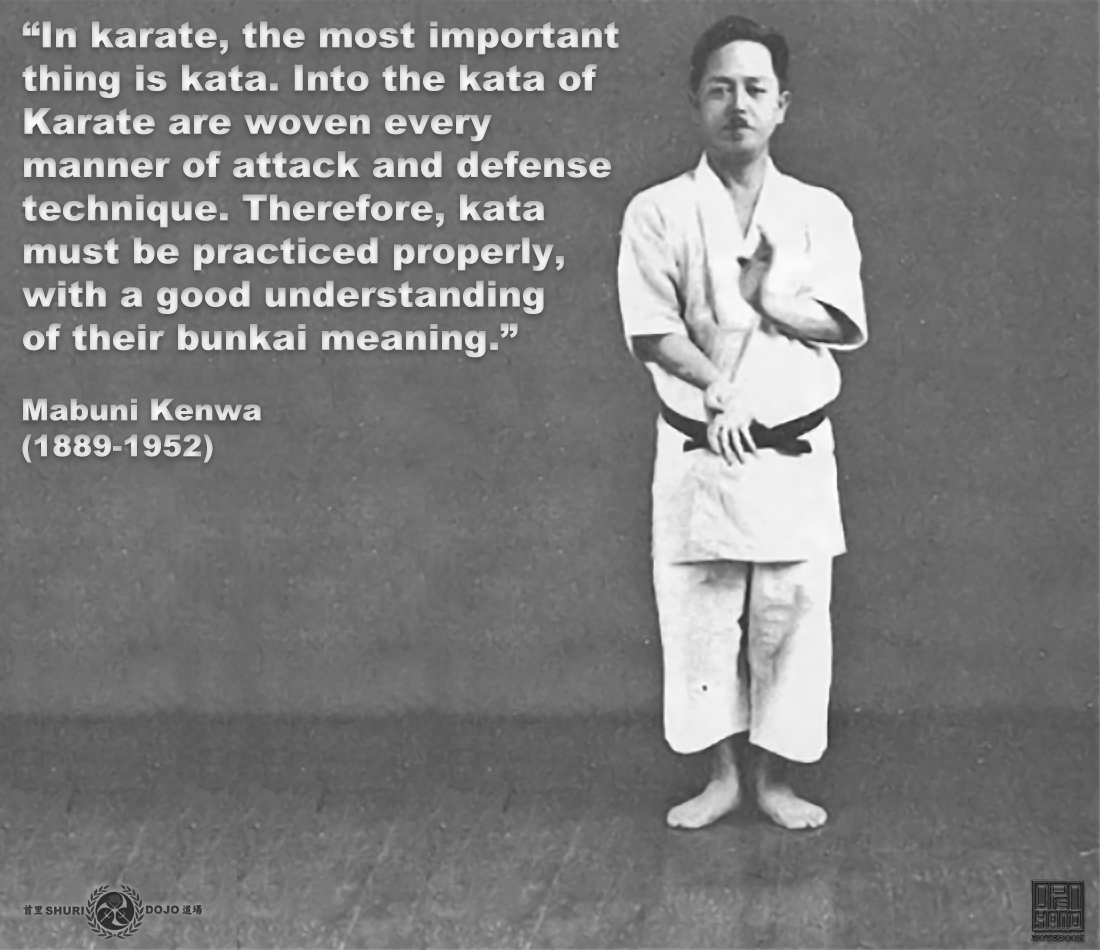
Kata are a library of self-protection techniques and principles in karate. Each kata creator encoded their specific knowledge into each movement of the kata they made. Kata are not simply a record of techniques, or a solo performance; rather each and every kata is designed to record the key principles and strategies of a complete self-defense fighting system. The karate ‘styles’ of the day.
.
For a kata to be used as a self-defense fighting system, it must be studied in the correct context. It is here that we find one of modern karate’s biggest failings, in that the kata are rarely studied sufficiently and in any depth. Today’s practitioner perhaps only seeing the kata as a way to pass the next belt level, or used to perform in a competition or tournament.
.
Recorded within the kata are the self-defense fighting principles of its creator. The techniques are important, but not as important as the principles of combat behind the techniques. It is an understanding of these principles that will allow you to freely and effectively express and use the kata in combat.
.
The kihon, the analyses, the applications, and what we now call kumite….. all came first. The kata were created for practitioners to remember the drills practiced in the dojo, so that they could practice when on their own. The analyses and applications were not a separate part of training kata. It was the kata training.
.
Kata were created to be used in actual combat. It is crucial that you understand this – every movement within the kata are designed to be used in real, non-consensual fights. The primary function of every move is to disable or incapacitate an assailant in a self-defense situation, and to facilitate your escape.
.
It is important to note that the kata in karate were inherited from Chinese tradition, and has little to do with the kata as understood on mainland Japan.
.
The original function of kata is mostly not required today if you’re simply interested in sparring, or dojo and tournament style fighting. In this respect, the use of kata is to develop gymnastic ability, aesthetics, fitness and to pass the next grade.
.
Kata application is often misinterpreted, impractical and applied to fighting situations they were not developed for. However, impractical does not equal ineffective. “Impractical” is literally that you can’t put it into “practice” for a given environment and time.
.
In consensual fighting, many karate practitioners often drop all basic techniques that they have trained, and adopt a more upright, high guard methodology. Which is inefficient and misapplication of strategy. This is done either from not knowing how to use karate effectively, or because their karate is being used against fighting techniques it was never designed for.
.
Practitioners should use their basic techniques they actually train (if correctly understood). They are effective, when used in the correct context. Concentrating solely on consensual fighting perhaps is an attempt to hide how little the teacher knows!
.
The kata IS karate. 👊🥋
.
“In karate, the most important thing is kata. Into the kata of Karate are woven every manner of attack and defense technique. Therefore, kata must be practiced properly, with a good understanding of their bunkai meaning.” – Mabuni Kenwa (1889-1952)
.
.
#karate #kata #bunkai #dojo #martialarts #karatejutsu #practicalkarate #budo #ikigai #zen #ryukyu
